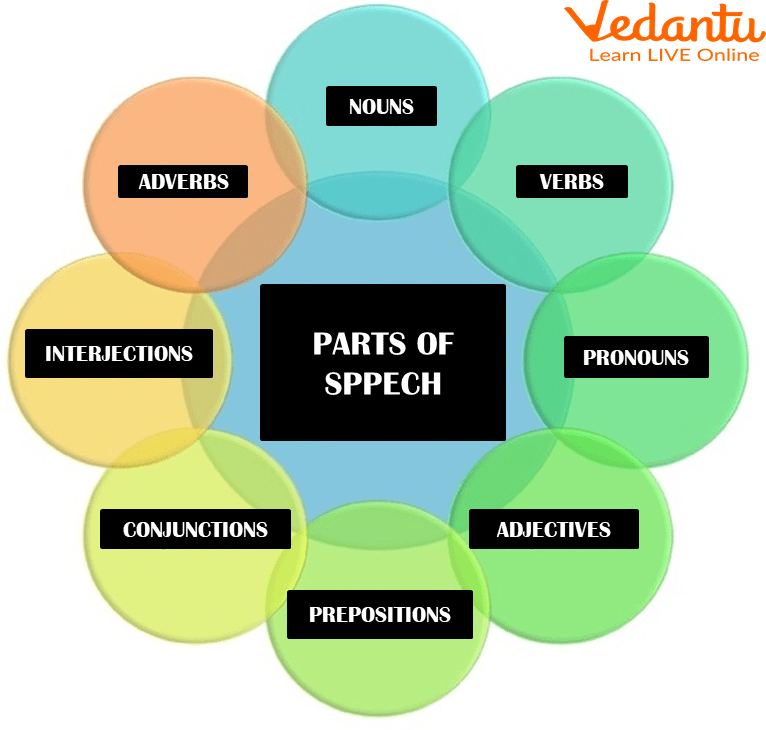




The basics of English Grammar for kids
Basic English grammar is the method through which we connect words to form a meaningful sentence with the help of some general rules applied. To understand English Grammar better, we will try to break the sentence and stress the words which will help us gain the meaning of the sentences.
The rules are further divided as parts of speech which are the noun, pronoun, determiners, verbs into present, past, future tense, modals, active – passive voices, phrases and clauses, prepositions and many more, all of these make a correct sentence and are known as basic English grammar collectively. So, let’s dive in and learn easy English grammar with the help of this article.
Basic English Grammar
Let’s take a simple example and try to understand the importance of rules of easy English grammar and what happens if these rules don't exist.

Woman Driving a Car
We will try to write a sentence without the easy English grammar rules and one with the rules to see the difference in the meaning.
With Grammar Rules: A woman is driving a car
Without Grammar Rules: A car is driving a women
Now as the difference is clear, let’s learn a bit about some topics of English grammar as parts of speech and verbs and their tenses.
Parts of Speech
Let’s have a quick overview of parts of speech, there are eight parts of speech in English grammar. Parts of speech are the classes into which words are divided according to their function in a sentence, these are as follows :
Noun
A noun is observed as the name of a person, place, or thing.
Example: John, Anita, boy, girl, gold, table, Chennai
Pronoun
A pronoun is generally a word used instead of a noun
Example: I, we, he, she, it, mine, ours, yours, them, their
Adjective
An adjective is used to usually qualify or add something to the meaning of the existing noun.
Example: a beautiful flower, twenty soldiers, little food
Verb
A verb specifies an action, being, or possession.
For example, the girl sang, Raman is an intelligent boy.
Verbs have three chief forms
The present tense
The past tense
The past participle
Adverb
An adverb is a word that adds value to an existing verb, an adjective, or another adverb.
Example: Raman runs quickly.
Preposition
A preposition is a word used in a sentence to show its relationship with the noun and the pronoun.
Example: a cat hid under the table
Conjunction
A conjunction is a word as but, which is used to join together words, phrases, or sentences.
Example: Raman is clever but lazy.
Interjection
An interjection is an exclamatory word, which shows some sudden reactions of shock or excitement
Example: Hurrah! India won a gold medal.

Parts of Speech
Verb: The Present Tense
The present tense like the past tense and future is divided into 4 further tenses :
Simple present, present continuous, present perfect tense, present perfect continuous
The present tense is used to express custom or habit as; I play badminton every evening.
To express what is happening at the present moment as; See, how it rains!
To express general truth; The earth moves around the sun.
Simple Present Tense Worksheet
Q1. Rewrite the passage using the simple present tense of the words given in the brackets. Complete the simple present tense worksheet.
Ans: At the new Delhi railway station, the kalam family (attract) attracts the attention of a large number of curious onlookers and media. Dr kalam (remain) remains untouched by the excitement of the masses. The day of the ceremony (start) starts like any other day with the regular 5 km walk at the Asiad village. He (take) takes a shower and (eat) eats a light south Indian breakfast consisting of Idli, sambhar, and buttermilk. He (dress) dresses immaculately in a suit and (step) steps out to acknowledge the greetings of the crowd.
Q2. Write 7 sentences about the things you like and 7 about the things you don’t like In simple present tense.
Ans: I like to eat chocolate.
I like to listen to music.
I like to draw sketches.
I like to watch tv.
I like -to dance.
I like to make friends.
I like to be at school.
I don’t like to have soup.
I don’t like to tell lies.
I don’t like to be disturbed.
I don’t like to fight.
I don’t like to play cricket.
I don’t like to cry a lot.
I don’t like my neighbour.
Summary
To summarise, grammar is a set of rules which apply to a language and result in making the sentence meaningful and correct in a sense, when these rules are applied to English as a language, it is known as English grammar. We often tend to speak informally in our daily life, which could be grammatically incorrect but by following the rules and by keeping in mind the eight parts of speech, we can form a correct sentence using English grammar topics and rules. In this article we learned about various different aspects of grammars like parts of speech as well as the basics of english grammar. We hope this article was helpful to you, however, in case of any other doubts, feel free to ask in the comments.
FAQs on Basic English Grammar: Key Rules and Concepts
1. Mention the types of present tense forms of verbs.
4 types of present tense forms are simple present tense, present continuous tense, present perfect tense, and present perfect continuous tense.
2. Describe in brief the types of nouns.
There are 5 types of nouns.
1. Proper Noun - It refers to the name of a particular person, place, thing etc. E.g. Sita, Agra
2. Common Noun- It refers to a name which is common to all things of the same kind. E.g. Girls, Dog
3. Abstract Noun - It refers to an emotion or feeling or something which can only be felt but cannot be seen. E.g. Kindness, foolishness
4. Collective Noun - It refers to the name of a group. E.g. Flock of sheep, a crowd of people
5. Material Noun - It refers to the names of materials or things. E.g. gold, water
3. What do you mean by 1st, 2nd and 3rd person pronouns?
The parameters for using 1st, 2nd and 3rd person pronouns are as follows
The person who is talking will be 1st person and 1st person pronouns such as I, we will be used. 2nd person will be the one, who is the first person talking to and 2nd person pronouns such as you will be used. Lastly, the ones who are being talked about will be the 3rd person and 3rd person pronouns such as he, she, and they will be used.









